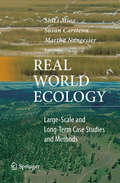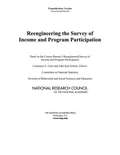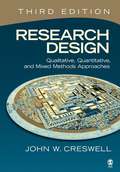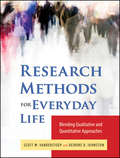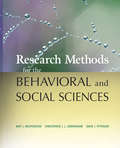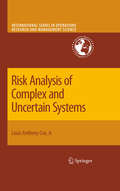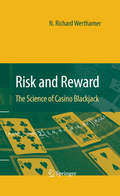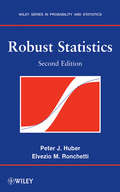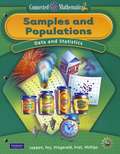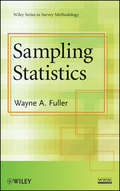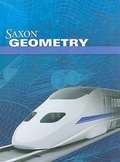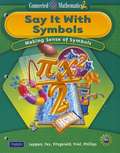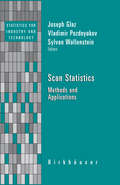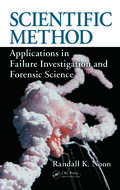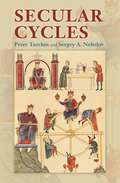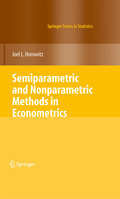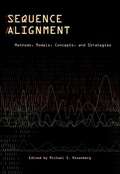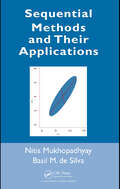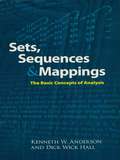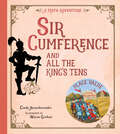- Table View
- List View
Real World Ecology
by Susan Carstenn Martha Nungesser Shili MiaoEcological and environmental research has increased in scope and complexity in the last few decades, from simple systems with a few managed variables to complex ecosystems with many uncontrolled variables. These issues encompass problems that are inadequately addressed using the types of carefully controlled experiments that dominate past ecological research. Contemporary challenges facing ecologists include whole ecosystem responses to planned restoration activities and ecosystem modifications, as well as unplanned catastrophic events such as biological invasions, natural disasters, and global climate changes. Major perturbations implicated in large-scale ecological alterations share important characteristics that challenge traditional experimental design and statistical analyses. These include: * Lack of randomization, replication and independence * Multiple scales of spatial and temporal variability * Complex interactions and system feedbacks. In real world ecology, standard replicated designs are often neither practical nor feasible for large-scale experiments, yet ecologists continue to cling to these same standard designs and related statistical analyses. Case studies that fully elucidate the currently available techniques for conducting large-scale unreplicated analyses are lacking. Real World Ecology: Large-Scale and Long-Term Case Studies and Methods is the first to focus on case studies to demonstrate how ecologists can investigate complex contemporary problems using new and powerful experimental approaches. This collection of case studies showcases innovative experimental designs, analytical options, and interpretation possibilities currently available to theoretical and applied ecologists, practitioners, and biostatisticians. By illustrating how scientists have answered pressing questions about ecosystem restoration, impact and recovery, global warming, conservation, modeling, and biological invasions, this book will broaden the acceptance and application of modern approaches by scientists and encourage further methodological development.
Reengineering the Survey of Income and Program Participation
by National Research Council of the National AcademiesBeginning in 2006, the Census Bureau embarked on a program to reengineer the Survey of Income and Program Participation (SIPP) to reduce its costs and improve data quality and timeliness. The Bureau also requested the National Academies to consider the advantages and disadvantages of strategies for linking administrative records and survey data, taking account of the accessibility of relevant administrative records, the operational feasibility of linking, the quality and usefulness of the linked data, and the ability to provide access to the linked data while protecting the confidentiality of individual respondents. In response, this volume first examines the history of SIPP and reviews the survey's purpose, value, strengths, and weaknesses. The book examines alternative uses of administrative records in a reengineered SIPP and, finally, considers innovations in SIPP design and data collection, including the proposed use of annual interviews with an event history calendar.
Research Design: Qualitative, Quantitative, and Mixed Methods Approaches
by John W. CreswellThe Bestselling Text is Completely Updated and Better than Ever Praise for the Third Edition I have used the older edition with great success. The new one is even better. -Kathleen Duncan, "University of La Verne" The Third Edition of the bestselling text Research Design by John W. Creswell enables readers to compare three approaches to research-qualitative, quantitative, and mixed methods-in a single research methods text. The book presents these three approaches side by side within the context of the process of research from the beginning steps of philosophical assumptions to the writing and presenting of research. Written in a user-friendly manner, Creswells text does not rely on technical jargon. He cuts to the core of what a reader needs to know to read and design research in part by showcasing ideas in a scaffold approach so that the reader understands ideas from the simple to the complex. Key updates to the Third Edition Presents the preliminary steps of using philosophical assumptions in the beginning of the book Provides an expanded discussion on ethical issues Emphasizes new Web-based technologies for literature searches Offers updated information about mixed methods research procedures Contains a glossary of terms Highlights research tips throughout the chapters incorporating the author s experiences over the last 35 years.
Research Methods for Everyday Life
by Deidre D. Johnson Scott W. VanderstoepThis book offers an innovative introduction to social research. The book explores all stages of the research process and it features both quantitative and qualitative methods. Research design topics include sampling techniques, choosing a research design, and determining research question that inform public opinion and direct future studies. Throughout the book, the authors provide vivid and engaging examples that reinforce the reading and understanding of social science research. "Your Turn" boxes contain activities that allow students to practice research skills, such as sampling, naturalistic observation, survey collection, coding, analysis, and report writing.
Research Methods for the Behavioral and Social Sciences
by Christopher J. Cunningham Bart L. Weathington David J. PittengerA comprehensive introduction to research methods and best practices for designing,conducting, interpreting, and reporting findings This text is designed to develop in students a passion for conducting research and an understanding of the practical value of systematic information- gathering and decision-making. It features step-by-step coverage of the research process including research design, statistical considerations, and guidance on writing up and presenting results. Recognized leaders in the field—authors Bart Weathington, Christopher Cunningham, and David Pittenger—present: Introductions to multiple research designs—including single-participant, multi-group, longitudinal, correlational, and experimental designs—accompanied by examples Bibliographic research and methods for appropriate sampling Identifying, developing, and evaluating reliable and valid approaches to measurement The issues and steps common to all single-factor and multifactor studies, as well as single-subject and nonexperimental methods How to summarize research in writing that conforms to the editorial guidelines of the American Psychological Association A comprehensive review of research methods and the statistical concepts that support them, Research Methods for the Behavioral and Social Sciences offers the best techniques for studying behavior and social phenomena.
Risk Analysis of Complex and Uncertain Systems
by Louis Anthony Cox Jr.In Risk Analysis of Complex and Uncertain Systems acknowledged risk authority Tony Cox shows all risk practitioners how Quantitative Risk Assessment (QRA) can be used to improve risk management decisions and policies. It develops and illustrates QRA methods for complex and uncertain biological, engineering, and social systems - systems that have behaviors that are just too complex to be modeled accurately in detail with high confidence - and shows how they can be applied to applications including assessing and managing risks from chemical carcinogens, antibiotic resistance, mad cow disease, terrorist attacks, and accidental or deliberate failures in telecommunications network infrastructure. This book was written for a broad range of practitioners, including decision risk analysts, operations researchers and management scientists, quantitative policy analysts, economists, health and safety risk assessors, engineers, and modelers.
Risk and Reward
by N. Richard WerthamerFor decades, casino gaming has been steadily increasing in popularity worldwide. Blackjack is among the most popular of the casino table games, one where astute choices of playing strategy can create an advantage for the player. RISK AND REWARD analyzes the game in depth, pinpointing not just its optimal strategies but also its financial performance, in terms of both expected cash flow and associated risk. The book begins by describing the strategies and their performance in a clear, straightforward style. The presentation is self-contained, non-mathematical, and accessible to readers at all levels of playing skill, from the novice to the blackjack expert. Careful attention is also given to simplified, but still nearly optimal strategies that are easier to use in a casino. Unlike other books in the literature the author then derives each aspect of the strategy mathematically, to justify its claim to optimality. The derivations mostly use algebra and calculus, although some require more advanced analysis detailed in supporting appendices. For easy comprehension, formulae are translated into tables and graphs through extensive computation. This book will appeal to everyone interested in blackjack: those with mathematical training intrigued by its application to this popular game as well as all players seeking to improve their performance.
Robust Statistics: The Approach Based On Influence Functions (Wiley Series in Probability and Statistics #693)
by Peter J. Huber Elvezio M. RonchettiA new edition of the classic, groundbreaking book on robust statistics Over twenty-five years after the publication of its predecessor, Robust Statistics, Second Edition continues to provide an authoritative and systematic treatment of the topic. This new edition has been thoroughly updated and expanded to reflect the latest advances in the field while also outlining the established theory and applications for building a solid foundation in robust statistics for both the theoretical and the applied statistician. A comprehensive introduction and discussion on the formal mathematical background behind qualitative and quantitative robustness is provided, and subsequent chapters delve into basic types of scale estimates, asymptotic minimax theory, regression, robust covariance, and robust design. In addition to an extended treatment of robust regression, the Second Edition features four new chapters covering: Robust Tests Small Sample Asymptotics Breakdown Point Bayesian Robustness An expanded treatment of robust regression and pseudo-values is also featured, and concepts, rather than mathematical completeness, are stressed in every discussion. Selected numerical algorithms for computing robust estimates and convergence proofs are provided throughout the book, along with quantitative robustness information for a variety of estimates. A General Remarks section appears at the beginning of each chapter and provides readers with ample motivation for working with the presented methods and techniques. Robust Statistics, Second Edition is an ideal book for graduate-level courses on the topic. It also serves as a valuable reference for researchers and practitioners who wish to study the statistical research associated with robust statistics.
Running Regressions
by Michelle Baddeley Diana BarrowcloughRunning Regressions introduces first-year social science undergraduates, particularly those studying economics and business, to the practical aspects of simple regression analysis, without adopting an esoteric, mathematical approach. It shows that statistical analysis can be simultaneously straightforward, useful and interesting, and can deal with topical, real-world issues. Each chapter introduces an economic theory or idea by relating it to an issue of topical interest, and explains how data and econometric analysis can be used to test it. The book can be used as a self-standing text or to supplement conventional econometric texts. It is also ideally suited as a guide to essays and project work.
SRA: Real Math, Grade 2
by Carl Bereiter Stephen S. Willoughby Peter HiltonSecond grade consumable math workbook
Samples and Populations, Data and Statistics
by Glenda Lappan James T. Fey William M. FitzgeraldNIMAC-sourced textbook
Sampling Statistics
by Wayne A. FullerDiscover the latest developments and current practices in survey samplingSurvey sampling is an important component of research in many fields, and as the importance of survey sampling continues to grow, sophisticated sampling techniques that are both economical and scientifically reliable are essential to planning statistical research and the design of experiments. Sampling Statistics presents estimation techniques and sampling concepts to facilitate the application of model-based procedures to survey samples.The book begins with an introduction to standard probability sampling concepts, which provides the foundation for studying samples selected from a finite population. The development of the theory of complex sampling methods is detailed, and subsequent chapters explore the construction of estimators, sample design, replication variance estimation, and procedures such as nonresponse adjustment and small area estimation where models play a key role. A final chapter covers analytic studies in which survey data are used for the estimation of parameters for a subject matter model.The author draws upon his extensive experience with survey samples in the book's numerous examples. Both the production of "general use" databases and the analytic study of a limited number of characteristics are discussed. Exercises at the end of each chapter allow readers to test their comprehension of the presented concepts and techniques, and the references provide further resources for study.Sampling Statistics is an ideal book for courses in survey sampling at the graduate level. It is also a valuable reference for practicing statisticians who analyze survey data or are involved in the design of sample surveys.
Say It With Symbols, Making Sense of Symbols
by Glenda Lappan James T. Fey William M. FitzgeraldNIMAC-sourced textbook
Scan Statistics
by Vladimir Pozdnyakov Joseph Glaz Sylvan WallensteinScan statistics is currently one of the most active and important areas of research in applied probability and statistics, having applications to a wide variety of fields: archaeology, astronomy, bioinformatics, biosurveillance, molecular biology, genetics, computer science, electrical engineering, geography, material sciences, physics, reconnaissance, reliability and quality control, telecommunication, and epidemiology. Filling a gap in the literature, this self-contained volume brings together a collection of selected chapters illustrating the depth and diversity of theory, methods and applications in the area of scan statistics.
Scientific Method: Applications in Failure Investigation and Forensic Science (International Forensic Science and Investigation)
by Randall K. NoonMost failure or accident investigations begin at the end of the story: after the explosion, after the fire has been extinguished, or after the collapse. In many instances, information about the last event and the starting event is known reasonably well. Information about what occurred between these endpoints, however, is often unclear, confusing, and perhaps contradictory. Scientific Method: Applications in Failure Investigation and Forensic Science explains how scientific investigative methods can best be used to determine why and how a particular event occurred.While employing examples from forensic engineering, the book uses principles and ideas applicable to most of the forensic sciences. The author examines the role of the failure investigator, describes the fundamental method for investigation, discusses the optimal way to organize evidence, and explores the four most common reasons why some investigations fail. The book provides three case studies that exemplify proper report writing, contains a special chapter profiling a criminal case by noted forensic specialist Jon J. Nordby, and offers a reading list of resources for further study.Concise and illustrative, this volume demonstrates how the scientific method can be applied to failure investigation in ways that avoid flawed reasoning while delivering convincing reconstruction scenarios. Investigators can pinpoint where things went wrong, providing valuable information that can prevent another catastrophe.
Searching for Whitopia: An Improbable Journey to the Heart of White America
by Rich BenjaminAs America becomes more and more racially diverse, Rich Benjamin noticed a phenomenon: Some communities were actually getting less multicultural. So he got out a map, found the whitest towns in the USA--and moved in.A journalist-adventurer, Benjamin packed his bags and embarked on a 26,909-mile journey throughout the heart of white America, to some of the fastest-growing and whitest locales in our nation. Benjamin calls these enclaves "Whitopias." In this groundbreaking book, he shares what he learned as a black man in Whitopia. Benjamin's journey to unlock the mysteries of Whitopia took him from a three-day white separatist retreat with links to Aryan Nations in North Idaho to exurban mega-churches down South, and many points in between. A compelling raconteur, bon vivant, and scholar, Benjamin reveals what Whitopias are like and explores the urgent social and political implications of this startling phenomenon. Benjamin's groundbreaking study is one of few to have illuminated in advance the social and political forces propelling the rise of Donald Trump. After all, Trump carried 94 percent of America's Whitopian counties. And he won a median 67 percent of the vote in Whitopia compared to 46 percent of the vote nationwide.Leaving behind speculation or sensationalism, Benjamin explores the future of whiteness and race in an increasingly multicultural nation.
Secular Cycles
by Peter Turchin Sergey A. NefedovMany historical processes exhibit recurrent patterns of change. Century-long periods of population expansion come before long periods of stagnation and decline; the dynamics of prices mirror population oscillations; and states go through strong expansionist phases followed by periods of state failure, endemic sociopolitical instability, and territorial loss. Peter Turchin and Sergey Nefedov explore the dynamics and causal connections between such demographic, economic, and political variables in agrarian societies and offer detailed explanations for these long-term oscillations--what the authors call secular cycles. Secular Cycles elaborates and expands upon the demographic-structural theory first advanced by Jack Goldstone, which provides an explanation of long-term oscillations. This book tests that theory's specific and quantitative predictions by tracing the dynamics of population numbers, prices and real wages, elite numbers and incomes, state finances, and sociopolitical instability. Turchin and Nefedov study societies in England, France, and Russia during the medieval and early modern periods, and look back at the Roman Republic and Empire. Incorporating theoretical and quantitative history, the authors examine a specific model of historical change and, more generally, investigate the utility of the dynamical systems approach in historical applications. An indispensable and groundbreaking resource for a wide variety of social scientists, Secular Cycles will interest practitioners of economic history, historical sociology, complexity studies, and demography.
Semiparametric and Nonparametric Methods in Econometrics
by Joel L. HorowitzStandard methods for estimating empirical models in economics and many other fields rely on strong assumptions about functional forms and the distributions of unobserved random variables. Often, it is assumed that functions of interest are linear or that unobserved random variables are normally distributed. Such assumptions simplify estimation and statistical inference but are rarely justified by economic theory or other a priori considerations. Inference based on convenient but incorrect assumptions about functional forms and distributions can be highly misleading. Nonparametric and semiparametric statistical methods provide a way to reduce the strength of the assumptions required for estimation and inference, thereby reducing the opportunities for obtaining misleading results. These methods are applicable to a wide variety of estimation problems in empirical economics and other fields, and they are being used in applied research with increasing frequency. The literature on nonparametric and semiparametric estimation is large and highly technical. This book presents the main ideas underlying a variety of nonparametric and semiparametric methods. It is accessible to graduate students and applied researchers who are familiar with econometric and statistical theory at the level taught in graduate-level courses in leading universities. The book emphasizes ideas instead of technical details and provides as intuitive an exposition as possible. Empirical examples illustrate the methods that are presented. This book updates and greatly expands the author's previous book on semiparametric methods in econometrics. Nearly half of the material is new.
Sequence Alignment: Methods, Models, Concepts, and Strategies
by Michael S. RosenbergThe sequencing of the human genome involved thousands of scientists but used relatively few tools. Today, obtaining sequences is simpler, but aligning the sequences--making sure that sequences from one source are properly compared to those from other sources--remains a complicated but underappreciated aspect of comparative molecular biology.
Sequential Methods and Their Applications
by Nitis Mukhopadhyay Basil M. de SilvaInteractively Run Simulations and Experiment with Real or Simulated Data to Make Sequential Analysis Come AliveTaking an accessible, nonmathematical approach to this field, Sequential Methods and Their Applications illustrates the efficiency of sequential methodologies when dealing with contemporary statistical challenges in many areas.The book fir
Sets, Sequences and Mappings: The Basic Concepts of Analysis
by Kenneth Anderson Dick Wick HallStudents progressing to advanced calculus are frequently confounded by the dramatic shift from mechanical to theoretical and from concrete to abstract. This text bridges the gap, offering a systematic development of the real number system and careful treatment of mappings, sequences, limits, continuity, and metric spaces.The first five chapters consist of a systematic development of many of the important properties of the real number system, plus detailed treatment of such concepts as mappings, sequences, limits, and continuity. The sixth and final chapter discusses metric spaces and generalizes many of the earlier concepts and results involving arbitrary metric spaces.An index of axioms and key theorems appears at the end of the book, and more than 300 problems amplify and supplement the material within the text. Geared toward students who have taken several semesters of basic calculus, this volume is an ideal prerequisite for mathematics majors preparing for a two-semester course in advanced calculus.
Shapes and Designs, Two - Dimensional Geometry
by Glenda Lappan James T. Fey William M. Fitzgerald Susan N. Friel Elizabeth Difanis PhillipsNIMAC-sourced textbook
Singular Limits in Thermodynamics of Viscous Fluids
by Eduard Feireisl Antonín NovotnýMany interesting problems in mathematical fluid dynamics involve the behavior of solutions of nonlinear systems of partial differential equations as certain parameters vanish or become infinite. Frequently the limiting solution, provided the limit exists, satisfies a qualitatively different system of differential equations. This book is designed as an introduction to the problems involving singular limits based on the concept of weak or variational solutions. The primitive system consists of a complete system of partial differential equations describing the time evolution of the three basic state variables: the density, the velocity, and the absolute temperature associated to a fluid, which is supposed to be compressible, viscous, and heat conducting. It can be represented by the Navier-Stokes-Fourier-system that combines Newton's rheological law for the viscous stress and Fourier's law of heat conduction for the internal energy flux. As a summary, this book studies singular limits of weak solutions to the system governing the flow of thermally conducting compressible viscous fluids.
Sir Cumference and All the King's Tens (Sir Cumference)
by Cindy NeuschwanderJoin Sir Cumference and the gang for more wordplay, puns, and problem solving in the clever math adventure about place-value and counting by tens. Sir Cumference and Lady Di planned a surprise birthday party for King Arthur, but they didn&’t expect so many guests to show up. How many lunches will they need? And with more guests arriving by the minute, what about dinner? Sir Cumference and Lady Di count guests by tens, hundreds, and even thousands to help young readers learn place-value. Fans will love this new installment of the Sir Cumference series that makes math fun and accessible for all.
